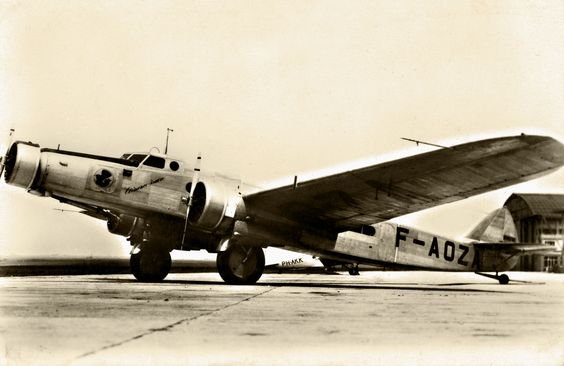Sunday 7 July 1940
 |
| View of French battleship, Richelieu, with buoys in the foreground marking the top of the anti-submarine net in the port of Dakar, Senegal, 1940. Smithsonian Institution Archives, Record Unit 7293. |
U-34 (Kapitänleutnant Wilhelm Rollmann) torpedoes and sinks freighter 2,584-ton Dutch freighter Lucrecia at 07:14 about 70 miles west of the Isles of Scilly in the western approaches. There are 30 survivors, and two crew perish. The ship takes some time to sink. Portuguese freighter Alferrarede arrives soon and picks up the survivors.
U-99 (Kapitänleutnant Otto Kretschmer) torpedoes and sinks 1,514-ton Swedish freighter Bissen at 23:12 about 80 miles southwest of Cape Clear in the southwest approaches. All 20 aboard survive.
U-99 then spots the freighter Sea Glory at 00:53 and torpedoes and sinks it in the same area. All 29 aboard perish.
German raider Thor captures British freighter Delambre in the South Atlantic.
U-30 arrives at the new U-boat base at Lorient, France, the first U-boat to use it.
Norwegian ship Krossfonn, captured by German raider Widder, arrives in Lorient with its prize crew.
Convoy OB 180 departs from Liverpool, Convoy HG 37 departs from Gibraltar, Convoy HX 56 departs from Halifax.
The British ship Teviotbank lays a minefield in the North Sea.
Battle of the Mediterranean: French Admiral Godefroy in Alexandria agrees to complete demobilization of his force, including the battleship Lorraine, three heavy cruisers, a light cruiser, and three destroyers. The ships technically remain under French command but are under British control. Most of the French crews are sent back to France on transports.
Operation MA5 begins. This is a British fleet operation to cover convoys from Malta to Alexandria. The Med Flt sortied from Alexandria and Port Said to cover convoys MS.1 and MF.1 coming from Malta. The fleet divides into three sections:
The Regia Aeronautica catches British submarine HMS Olympus in port at Malta and bombs it, severely damaging it.
- Force A, which includes cruisers Neptune, Orion, Gloucester, and Liverpool;
- Force B with battleship/flagship Warspite and destroyers Nubian, Mohawk, Hero, Hereward and Decoy;
- Force C with battleships Royal Sovereign and Malaya, aircraft carrier Eagle and destroyers Hasty, Hyperion, Ilex, Voyager, and other ships;
- Force D from Malta, which has destroyers Diamond and Jervis and other ships.
The Italians also attack Alexandria with 11 S-81 bombers during the night.
An Italian battalion crosses into Sudan and occupies Kurmuk.
At Malta, there is an air raid at 09:17 which drops bombs on Benghalsa and the dockyards. Eight civilians perish (seven from one family, a mother with her six young children), and eight civilians and an officer are wounded. The RAF responds and a Hurricane shoots down one of the bombers. Another attempted raid in the afternoon is chased off by the RAF before it reaches the island.
Italy grants permission for the French Navy to keep its Mediterranean bases armed.
During the afternoon, II/JG51 and II/JG51 engage with Spitfires over England. The Bf 109s shoot down three Spitfires of RAF No. 54 Squadron over Manston. Another dogfight over Folkestone sends four RAF fighters down, three Spitfires and a Hurricane.
In the evening, some fighters of JG27 shoot down three Spitfires of RAF No. 64 Squadron.
Dornier Do 17s raid the West Country, killing five people.
A night right by He 11 bombers of 4/KG55 is intercepted by British fighters over Portland, Dorset. The bombers sustain damage but make it back to base.
RAF Bomber Command raids the Ruhr industrial valley (Ludwigshafen and Frankfurt) and loses a Blenheim bomber to a pilot from III/JG26. In other raids, the damage is done to barracks at Wilhelmshaven and the canal at Duisberg-Ruhrort. The Fleet Air Arm raids Bergen, setting alight oil storage tanks.
German/Italian Relations: Italian Foreign Minister Count Ciano meets with Hitler, who tells him that he is not ready to attack Yugoslavia. Their general topic is the "new order in Europe."
Soviet Military: General Dmitrii Pavlov becomes commander-in-chief of the Western Special Military District, which controls the direct route between Germany and Moscow.
US Government: President Roosevelt tells Congress that he is sending a US Marine Corps brigade to Iceland, which currently is occupied by British troops
League of Nations: The Secretary-General fires all British staff, hoping to curry favor with Hitler.
 |
| A Dewoitine D.338. |
Mexico: Mexico holds elections. In the race for President, Manuel Ávila Camacho is elected president with 93.9% of the vote.
Holocaust: The Vichy French government orders the arrest of Jewish refugees.
British Homefront: Evacuations of children from large cities continues.
Future History: Richard Starkey is born in Dingle, Liverpool. He becomes famous as a drummer in the early 1960s and joins The Beatles as Ringo Starr. The oldest Beatle, Ringo eventually enters the Rock and Roll Hall of Fame.
 |
| Ringo Starr during his Beatles days. |
July 1940
July 1, 1940: Vichy France
July 2, 1940: Arandora Star
July 3, 1940: Operation Catapult at Mers El Kébir
July 4, 1940: Romania In Crisis
July 5, 1940: The Five Freedoms
July 6, 1940: Hitler's High Point
July 7 1940: Dakar And Ringo
July 8, 1940: Tea Rationing in England
July 9, 1940: Battle of Calabria
July 10, 1940: Battle of Britain Begins
July 11, 1940: "Nous, Philippe Petain"
July 12, 1940: Enter Laval
July 13, 1940: German Surface Raiders Attack!
July 14, 1940: Bastille/Mourning Day
July 15, 1940: Tallest Man Dies
July 16, 1940: Plans for Sea Lion
July 17, 1940: Burma Road Closed
July 18, 1940: FDR Runs Again
July 19, 1940: Last Appeal To Reason
July 20, 1940: First Night Fighter Victory
July 21, 1940: Soviets Absorb Baltic States
July 22, 1940: First RAF Night Fighter Victory
July 23, 1940: Invasion False Alarm
July 24, 1940: The Meknés Incident
July 25, 1940: Black Thursday for RAF
July 26, 1940: Capture The Duke?
July 27, 1940: What's Up, Doc?
July 28, 1940: Destroyers Pulled From Dover
July 29, 1940: Barbarossa On The Burner
July 30, 1940: Hitler Delays Sealion
July 31, 1940: Bloody Wednesday of Olkusz
2020

No comments:
Post a Comment